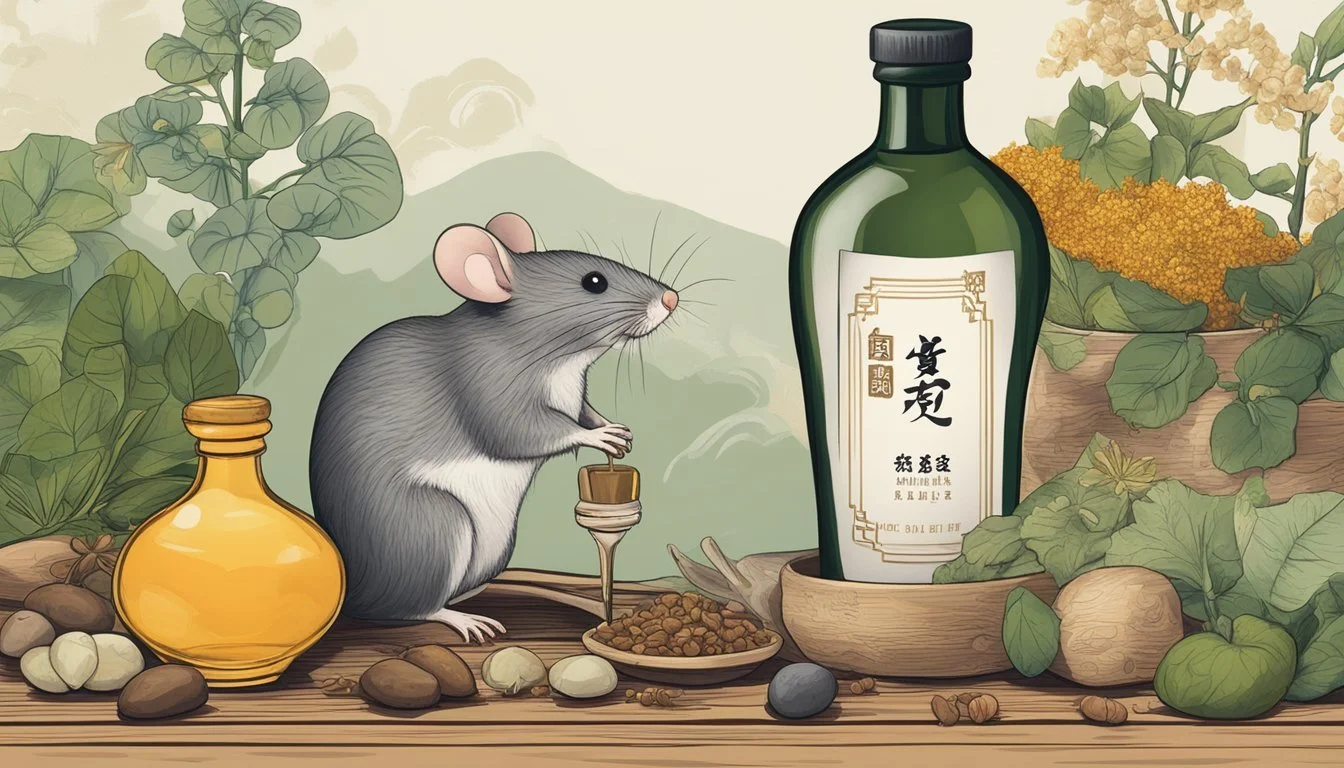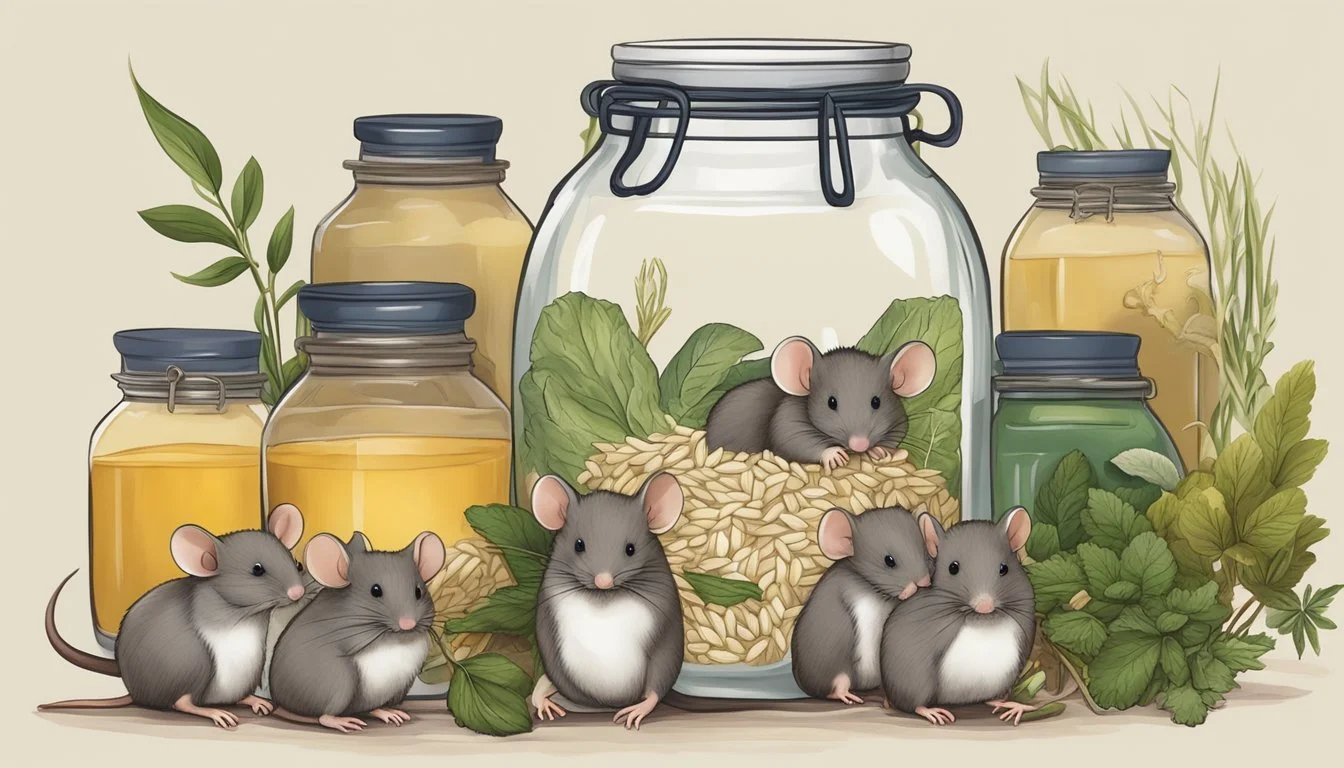Mice Wine
Unveiling Asia's Controversial Health Elixir
Mice wine is an Asian tonic that has long sparked intrigue and controversy. This traditional beverage is often associated with health benefits and is typically found in China. It is made by infusing rice wine with newborn mice, taking care to select those only a few days old. The mice are left to ferment in the wine, a process believed by some to enhance the medicinal properties of the drink.
Regarded by some as a remedy, mice wine is said to combat a range of ailments, from liver disease to asthma. The origins of this practice are cloudy with both Korea and China credited in historical accounts. While the consumption of mice wine is not widespread, it's a poignant example of traditional medicine practices that persist in certain parts of Asia.
While the thought of consuming such a beverage may be unsettling to many, the use of animals in traditional healing modalities has a long history in various cultures. Despite its controversial nature, the consumption of mice wine illustrates the intersection of tradition, health, and the lengths to which humans will go in the pursuit of well-being. Its place in the spectrum of traditional Asian health tonics serves as a reminder of the rich diversity of global medicinal practices.
Historical and Cultural Context
The consumption of mice wine has deep-rooted significance and serves as a testimony to the ancient medical practices of several Asian cultures. This tonic, which may seem unorthodox to many, underscores the diverse traditional remedies still observed in parts of Asia today.
Origins in Traditional Chinese Medicine
In Traditional Chinese Medicine (TCM), animal-based tonics have been utilized for centuries, aiming to treat a range of health issues. Mice wine emerged as a health tonic in this context, believed to channel healing properties. It involves the fermentation of newborn mice in rice wine, a process steeped in the TCM principle of harnessing "qi" or life force that ostensibly supports various body functions.
Mice Wine in Korean Folk Remedies
In Korea, mice wine has been recognized as a folk remedy, particularly in rural areas. Its use is less widespread compared to TCM but it holds a similar standing as a health tonic; administered to fortify the body against ailments. Korean traditional medicine often parallels TCM concepts, and the inclusion of mice wine in their pharmacopeia reflects this affinity.
Regional Variations Across Asia
Across Asia, variations of mice wine can be found, albeit nuanced by regional practices and beliefs. For instance:
China: The practice is more commonly associated with southern regions. The tonic is typically made with rice wine and consumed with the belief of gaining vitality.
Korea: While not as prevalent, when consumed, it's often as a home remedy.
Vietnam: Reports suggest a lesser-known presence of similar tonics, often rooted in cultural exchanges with neighboring countries.
Each locality adds its layer to the concoction's preparation, reflecting the diverse medical traditions spanning the Asian continent.
The Making of Mice Wine
Mice wine is an ancient beverage, often considered a health tonic in parts of Asia. This wine involves a unique process of fermentation, where baby mice are combined with rice wine, and left to age over an extended period.
Selecting and Preparing the Mice
For the production of baby mice wine, the selection is critical. Typically, infant mice that are no more than three days old are used; at this stage, their eyes are still closed. These mice are thoroughly cleaned before use to ensure there's no contamination during the fermentation process.
The Fermentation Process
Once prepared, the baby mice are placed into containers filled with rice wine. This mixture is then sealed and left to ferment.Yeast is naturally present on the rice grains, which assists in the fermentation by converting sugars into alcohol. The fermentation period usually lasts between 12-14 months.
Aging and Maturation
After fermentation, the concoction undergoes an aging process to develop its flavor. During this time, the alcohol content stabilizes and the medicinal qualities attributed to the wine are said to intensify. The aged product supposedly exhibits a complex flavor profile unique to this type of wine.
The making of mice wine is a traditional practice that certainly illustrates the diverse and historical methods of alcoholic fermentation and maturation across different cultures.
Potential Health Benefits
Mice wine, often referred to as a health tonic, has been traditionally consumed in parts of Asia with the belief that it harbors curative properties. This section will explore its claimed medicinal attributes, the ailments it is purported to address, and the degree to which scientific research supports its effectiveness.
Documented Medicinal Properties
Historically, the consumption of mice wine is said to be grounded in the premise that it contains beneficial compounds capable of boosting health. In traditional medicine, the preparation involves infusing newly born mice in rice wine, which proponents argue imparts the wine with various medicinal properties. These properties are often linked to improving vitality and functioning as a cure for certain ailments.
Common Ailments Addressed
Liver Disease: It is occasionally claimed that mice wine can support liver health or provide benefits for those suffering from liver disease.
General Health: As a broad-spectrum tonic, it is touted to enhance overall health and well-being.
These claims are a part of traditional lore and practices with roots in ancient medicine rather than being established by modern scientific evidence.
Scientific Research on Effectiveness
Scientific scrutiny of mice wine is limited, and the evidence regarding its health benefits is sparse. The topic remains controversial and warrants a closer look by the scientific community to ascertain the validity of claims made about this unconventional tonic. A small collection of studies may suggest some health benefits, but these are far from conclusive and should be approached with caution.
Research encompassing evaluations on the safety and efficacy of treatments like mice wine is crucial. In light of this, consumption of mice wine should be critically assessed against the backdrop of modern medical evidence.
Sensory Experience and Taste Profile
Mice wine, an Asian health tonic, presents a starkly different sensory experience compared to traditional wines, primarily due to its unconventional main ingredient—newborn mice.
Comparison to Traditional Wines
Traditional wines, including red and white varieties, offer a complex array of flavors that vintners expertly craft. These wines typically undergo a fermentation process where the taste gradually develops over time, often resulting in a rich, fruity, or earthy profile depending on the grape type and winemaking technique. In contrast, mice wine deviates significantly, as it lacks the grape-derived subtleties and instead introduces flavors that are not found in standard wine categories.
Describing the Flavor of Mice Wine
The flavor profile of mice wine is notably distinct and arguably challenging to articulate. Consumers have mentioned that it carries an intense taste, which some compare to the potent smell of raw gasoline—sharp and pungent. Unlike red wine or vodka, which have clear taste notes and expected palates, mice wine steps into an unorthodox taste realm, with fermented rice acting as its alcoholic base augmented by the presence of the submerged mice.
Consumer Reactions and Reviews
Reactions to mice wine vary widely, with some individuals intrigued by its unique character and others decidedly repulsed. Reviews typically highlight the experience of consumption as much as the taste itself. Consumers often approach the beverage with hesitance, though some report that the health benefits associated with traditional Asian remedies encourage them to try the wine despite the initial discomfort. The reviews remain as diverse as the individuals tasting the wine, painting a complex picture of acceptance and aversion.
Addressing Ethical Concerns
The production of Baby Mice Wine raises significant ethical questions that revolve around the welfare of animals and the respect for cultural practices. It is crucial to examine the moral implications of using live animals in traditional tonics while also considering the cultural heritage that such practices represent.
Animal Welfare Considerations
Animal rights advocates point out that the method of producing Baby Mice Wine involves placing live newborn mice into a bottle of rice wine, where they subsequently drown and ferment. This practice has been criticized for causing needless suffering to the animals. Ethical concerns are paramount because:
Mice are sentient beings capable of feeling pain and distress.
The practice of drowning is inhumane and raises serious concerns about the welfare of the animals involved.
Given these points, the ethical discourse around Baby Mice Wine suggests a need for alternatives that do not involve the suffering of animals.
Cultural Sensitivity and Traditions
On the other hand, acknowledging the cultural heritage behind traditional practices is essential. Baby Mice Wine is rooted in a belief that such tonics have medicinal benefits, a perspective influenced by historical and cultural contexts. Addressing these ethical concerns involves:
Understanding the cultural significance of Baby Mice Wine in certain Asian traditions.
Engaging in dialogue that respects traditions while promoting humane practices.
The challenge lies in balancing respect for cultural practices with progressive animal welfare standards.
Purchasing and Consumption
When seeking out mice wine, potential buyers must navigate a complex landscape of availability and legality. Knowledge of where to obtain this tonic and understanding the restrictions in place are crucial for anyone interested in the experience.
Where to Find Mice Wine
Mice wine, due to its unique nature and specific cultural origins, is not commonly found in conventional liquor stores or supermarkets. Interested individuals are more likely to encounter this drink in:
Local Markets: In certain Asian regions, traditional markets may offer mice wine, especially in rural areas where it is traditionally made.
Specialty Stores: Some stores specializing in exotic or traditional Asian beverages may stock mice wine.
Online Retailers: There are online platforms that offer a variety of traditional and rare liquors, including mice wine. It is imperative to ensure that the site or app used for purchasing is reputable to avoid counterfeit products.
Legal Considerations and Restrictions
The legality of mice wine varies wildly across jurisdictions:
In the US: Importation and sale of mice wine can be fraught with legal hurdles. It is subject to stringent FDA regulations and may fall foul of animal cruelty laws.
Internationally: Regulations can be less stringent in some Asian countries, where mice wine is a part of traditional medicine. However, even within these regions, legality may vary, and checking local laws is advised.
Before attempting to purchase or consume mice wine, individuals must verify the legality in their specific location to ensure they are not violating importation, animal welfare, or health safety laws.
Marketing and Advertising
In the niche market of traditional health tonics, the marketing and advertising strategies for products like Mouse Wine are vital in maintaining cultural relevance and appeal.
Branding and Product Presentation
Branding plays a crucial role in the Mouse Wine market. Sellers focus on the traditional aspects of the product, often using cultural motifs and colors known to signify health and vitality in Asian cultures. It's common for labels and packaging to feature calligraphy and images that hint at the historical significance of the tonic.
Product Presentation is tailored to assert the wine's authenticity and supposed health benefits. The presentation not only includes the physical packaging but also careful wording in its description, emphasizing the meticulous process of creating the wine and its traditional roots.
Engaging Potential Customers
Content is carefully curated to inform and educate potential customers about the perceived benefits of Mouse Wine. Through stories and testimonials, the content seeks to connect with customers, building a narrative of well-being and tradition.
To improve customer engagement, marketers often utilize storytelling elements involving traditional medicine, historical usage, and testimonials from users claiming health benefits.
Advertising strategies employ a mix of traditional media and modern digital platforms. They target demographic groups that are likely to be receptive to traditional remedies. Advertisements might feature in specialized health and wellness magazines, community-based events, and online forums focused on alternative medicine.
Through consistent messages, marketers aim to build trust and credibility among potential customers, emphasizing the purported health benefits and the tonic's place in traditional healing.
Conclusion
Baby mice wine has long been embedded in certain Asian cultures, especially within traditional medicinal practices. This wine is often considered a health tonic, believed to possess various therapeutic properties. The consumption of such a peculiar brew is not for the faint-hearted due to its controversial nature and preparation methods that involve fermenting infant mice in rice wine.
Cultural Perspectives
Acceptance: It is primarily found in rural areas and less common in urban settings.
Debate: The origin remains contested, attributed to either ancient Korean or Chinese cuisine.
Health Claims
The intended benefits range from antifatigue to antiaging effects.
Scientific scrutiny is limited; thus, the therapeutic claims lack robust clinical evidence.
Ethical Considerations
Animal welfare concerns arise due to the fermentation process involving live baby mice.
Cultural sensitivities must be respected while assessing the practice from an ethical standpoint.
Regulatory Stance
Regulatory bodies might classify baby mice wine differently depending on the region:
Medication: If claimed benefits are verified, it could be considered a traditional medication.
Alcohol: Otherwise, it is generally treated as a type of wine or alcohol.
While baby mice wine is an intriguing element of traditional Asian therapeutics, its acceptance is far from universal. It remains a niche product with a specific consumer base, often influenced by historic and cultural contexts. The wine's medicinal status is anecdotal and lacks substantive scientific endorsement, leading to varied global perceptions on its consumption and production.








